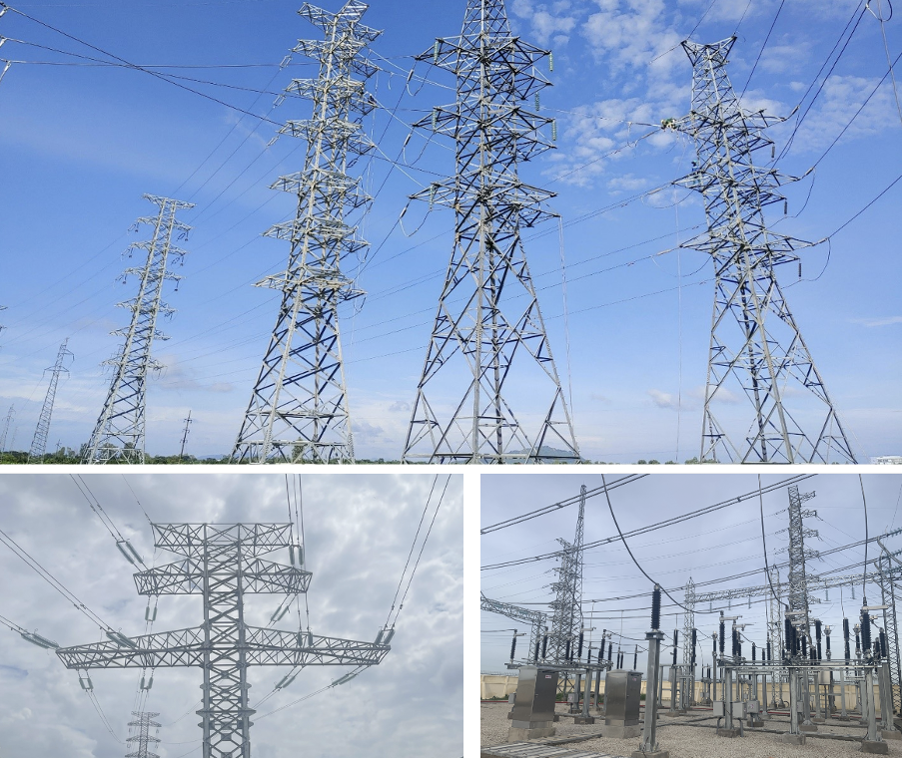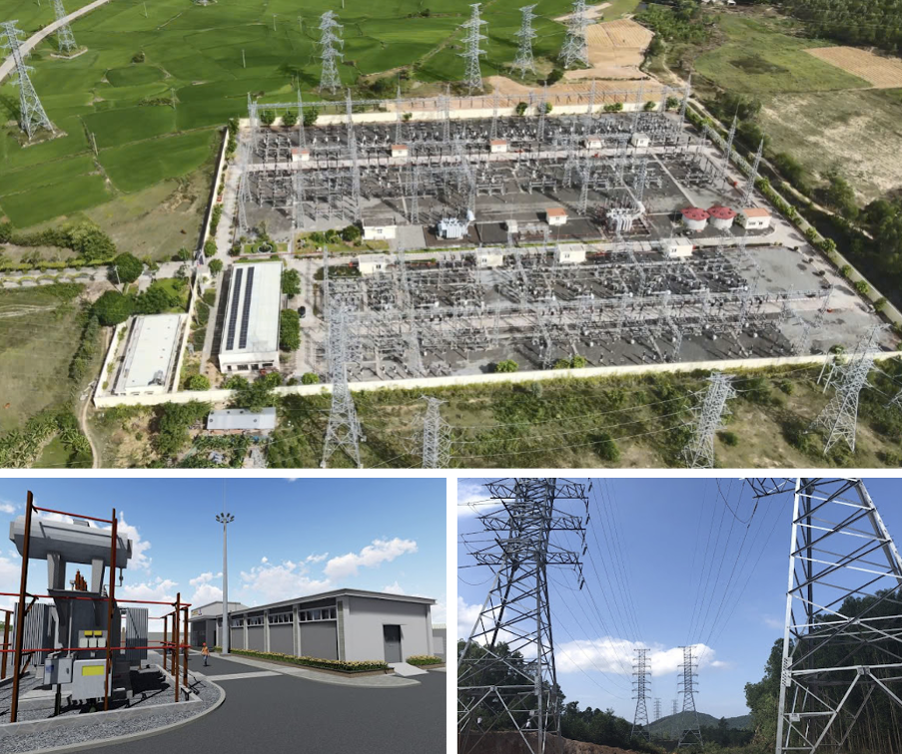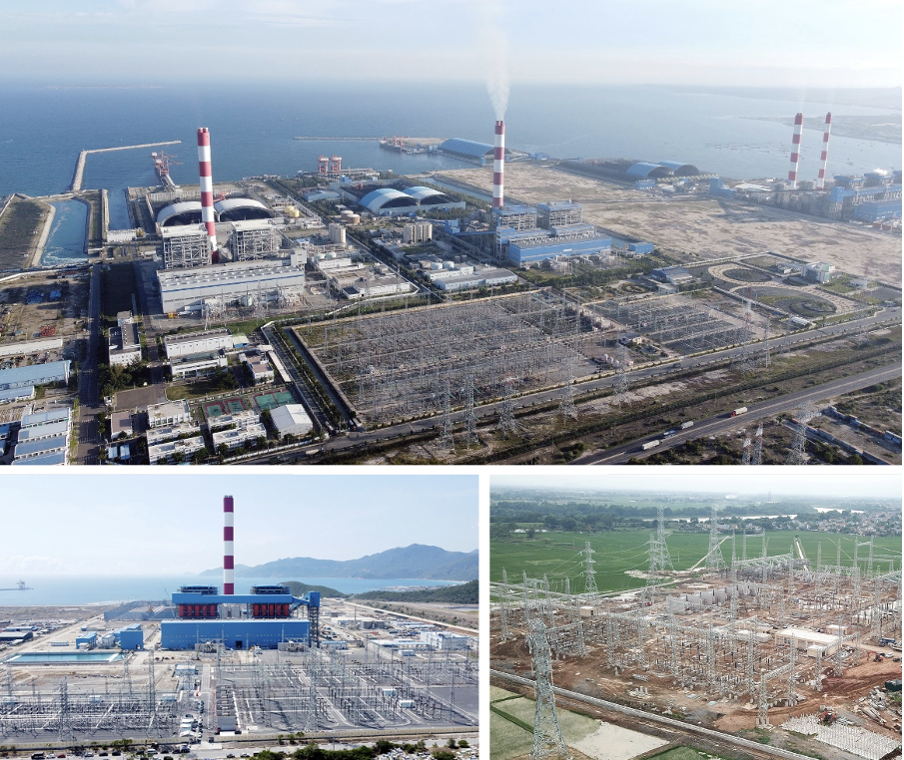How does electricity generated from hydropower, thermal power, or renewable energy plants located far away reach us safely, reliably, and efficiently?
The answer lies in power transmission constructions a vast and complex infrastructure system that functions as the lifeline of the entire economy. These are not just the towering pylons and wires we see along highways, but an advanced technical network that plays a decisive role in national energy security and development.
This article will help clarify the key concepts of power transmission systems in the simplest way.
Definition: What Is a Power Transmission Construction?
A power transmission construction is a comprehensive system consisting of transmission lines, substations, and auxiliary technological equipment designed to transfer electricity from generation plants to consumption areas.
It serves as the crucial link connecting electricity production with end users, ensuring a stable and secure national power supply.
Structure and Components of Power Transmission Systems
A typical power transmission construction includes the following main components:
- Transmission Lines:
These can be overhead lines or underground cables responsible for carrying electricity across long distances and diverse terrains. - Substations:
Facilities that step up or step down voltage levels to suit transmission or distribution requirements. - Protection and Control Equipment:
Including circuit breakers, measurement systems, insulators, lightning arresters, and vibration dampers for line safety and reliability.
Classification of Transmission Networks:
- Extra-High Voltage Grid: 330kV, 500kV and above — for long-distance, large-scale power transmission.
- High Voltage Grid: 110kV–220kV — connecting regions and industrial zones.
- Medium and Low Voltage Networks: For distributing power to residential and small production areas.

Economic and Social Significance of Power Transmission Constructions
Power transmission infrastructure contributes profoundly to national development across multiple dimensions:
- National Grid Integration and Energy Balancing
The North–South 500kV line connected Vietnam’s three regional grids, balancing electricity supply nationwide, resolving regional shortages, and enhancing national energy security. - Resource Optimization and Cost Reduction
The 500kV network reduced reliance on expensive liquid fuel sources in central and southern regions, saving national budget and business costs, while ensuring stable production. - Driving Regional and National Economic Growth
Stable electricity enables industrial parks, cities, and new economic zones to develop, attracting investment and boosting GDP growth nationwide. - Advancing Science and Technology Capacity
Designing and constructing high-voltage systems domestically proves Vietnam’s mastery of advanced technologies, building a high-quality technical workforce. - Job Creation and Innovation
Major power transmission projects have created thousands of jobs and fostered a spirit of creativity, resilience, and innovation within Vietnam’s energy sector. - Ensuring Energy Security Amid Global Integration
Continuous upgrades — such as the 500kV circuit-3 expansion — meet rising energy demands, supporting digital transformation, industrialization, and modernization.
Typical Power Transmission Projects by DaiDung Electro-Mechanics
DaiDung Group, through its member company DaiDung Mechanical & Electrical (M&E), has played a pivotal role in developing Vietnam’s power transmission infrastructure. The company has delivered numerous high-voltage tower and substation projects, showcasing its expertise in steel structure fabrication, hot-dip galvanization, and advanced engineering.
Selected Transmission Tower Projects:
- 220kV Buon Kuop – Dak Nong Line – 731 tons of steel structures.
- 500kV Pleiku – My Phuoc – Cau Bong Line – 1,980 tons across five provinces.
- 220kV An Khe – Quy Nhon (Phase 2) – 1,826 tons of steel towers.
- 110kV Connection after 220kV Phu My Substation – 625 tons.

- 110kV Tuy Hoa – Tuy An – Song Cau 2 Upgrade – 1,106 tons.
- 500kV Nghi Son 2 Connection to National Grid – 957 tons.
- 220kV Kien Binh – Phu Quoc Line – 3,280 tons.
- 500kV Doc Soi – Pleiku Line – 557 tons.
- 220kV Chau Doc – Tinh Bien (Circuit 2) – 60 tons.
- 500kV Van Phong – Vinh Tan (Lot 12.1) – 1,872 tons.

- 110kV Long Xuyen 2 – An Chau – Cai Dau Line – 845 tons.
- 220kV Nha Trang – Thap Cham Line – 556 tons.
- 110kV Sam Son 2 Line & Substation – 893 tons.
Substation Projects:
- Energy Connect Project (Australia) – 285 tons of fireproof panels, stairs, railings, gratings, and steel frames for a 500/330kV substation.
- 500kV Thanh Hoa Substation (Vietnam) – 1,182 tons of galvanized steel gantries and cross-arms.

Challenges and Future Directions
Key Challenges:
- High investment costs and complex construction conditions (mountains, rivers, dense urban areas).
- Strict safety, maintenance, and weather-resilience requirements.
Development Directions:
The future of power transmission construction lies in automation, digitalization, and green technology integration.
DaiDung Group, through its mechanical engineering division, has continuously upgraded its manufacturing technology — equipped with modern CNC systems, hydraulic presses, automated forming machines, and a state-of-the-art hot dip galvanized steel.
The company aims to expand its market share in Vietnam’s energy infrastructure sector while upholding its business philosophy:
“Every action leads toward sustainable development.”
Through optimized production, reduced emissions, and adherence to environmental standards, DaiDung Group continues to contribute to Vietnam’s clean energy transition.
The company has also supported major renewable energy projects, including:
- Hoa Thang 2.2 Wind Power Plant (Binh Thuan): 670 tons of steel towers.
- KN Van Ninh Solar Power Plant (Khanh Hoa): 2,520 tons of steel support frames.
Conclusion
Power transmission constructions are far more than technical infrastructure they are the backbone of national growth and sustainability.
A resilient, modern transmission system not only ensures a stable power supply but also facilitates the integration of renewable energy sources, driving Vietnam toward a greener future.
In this mission, enterprises like DaiDung Group stand out as strategic partners not merely suppliers, but trusted innovators powering Vietnam’s energy transformation.
